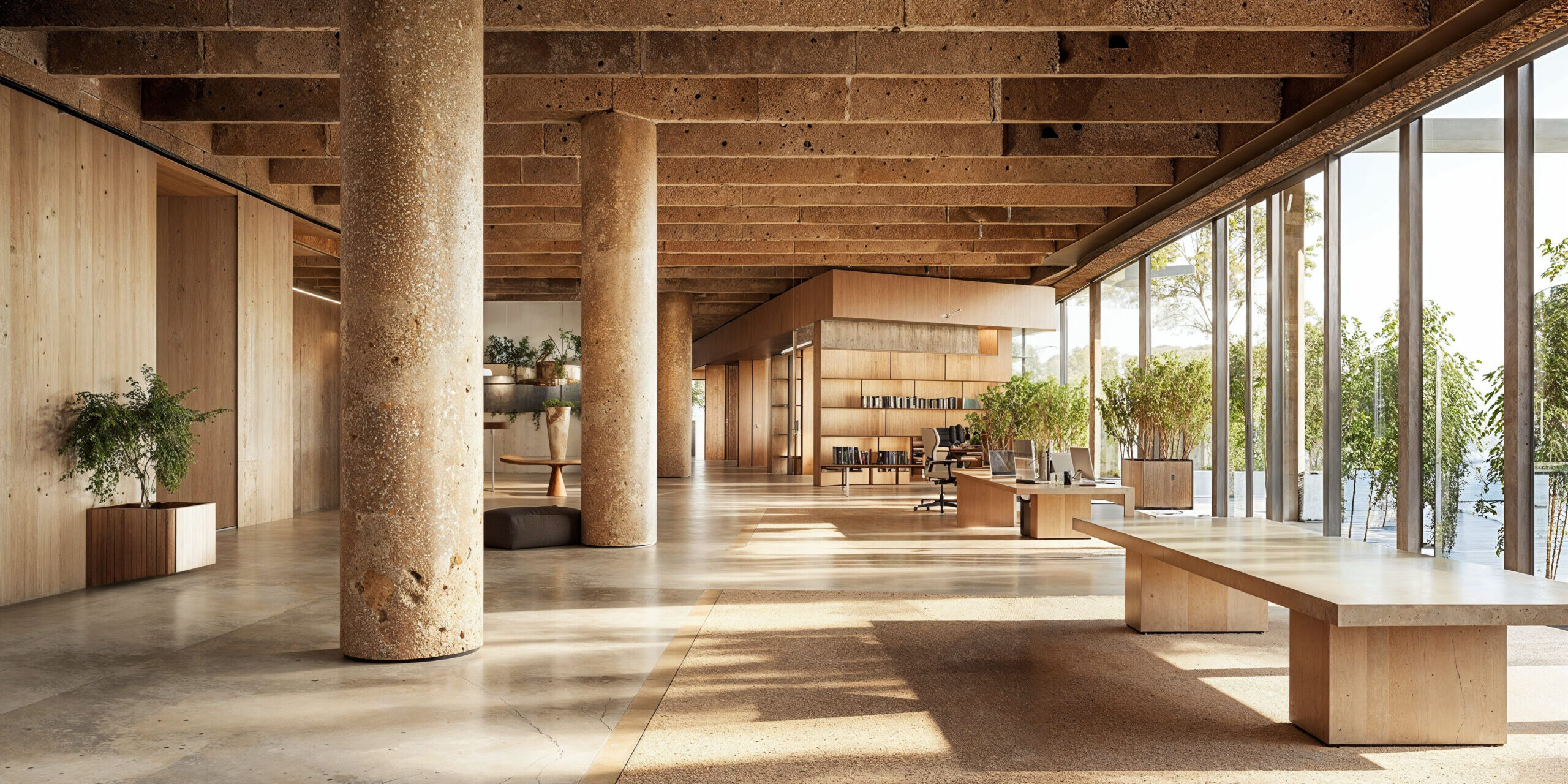
Combining aesthetic appeal with environmental responsibility.
As climate change continues to be a major concern, the rapid adoption of green building materials shows a promising change within the architecture and design community. A balance of recycled content and renewable natural material sources combine to make sustainable projects that are also works of art. Recycled steel, which requires significantly less energy to produce than new, is commonly used in structural frameworks and can be repeatedly recycled without loss of strength. This makes it a vital component in constructing durable and sustainable buildings. Cork, a renewable resource harvested from the bark of cork oak trees, is utilized for flooring and wall coverings due to its durability, insulating properties, enhanced acoustic properties, and minimal environmental footprint. Its ability to regenerate without harming the tree makes it an environmentally friendly choice.
Stone, particularly when sourced locally, serves as a natural and long-lasting option for countertops, flooring, and facades. Its inherent durability and aesthetic appeal make it a favored material, and sourcing it locally reduces transportation emissions, further enhancing its eco-friendly credentials. Bamboo, a fast-growing grass that regenerates quickly, is popular for flooring, wall panels, and even furniture. Offering a strong, lightweight, and sustainable alternative to traditional hardwoods and is celebrated for its rapid growth cycle and minimal impact on the environment.
Together, these materials exemplify how commercial buildings can integrate recycled and natural resources to achieve both environmental responsibility and design excellence. The integration of such materials not only contributes to reducing the carbon footprint of new constructions but also demonstrates a commitment to sustainable practices. Architects and designers are increasingly embracing these options, proving that environmental stewardship and aesthetic beauty can go hand in hand. By prioritizing green building materials, the architecture and design community is leading the way toward a more sustainable and resilient future, where innovation and sustainability converge to create spaces that are both beautiful and eco-conscious.
Learn more about sustainable building with the Beauty and Benefits of Eco-Friendly Facades.








